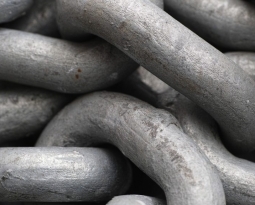South Dakota Patent of the Month – December 2021
Mobile work platforms are often incredibly convenient in the construction or industrial sectors. Rather than needing to climb up and down a ladder as you move along, the platform provides a safe space which can be repositioned as needed. Terex South Dakota, Inc. has designed a work platform which can be safely mounted to a vehicle to further increase its use.
Their platform can be mounted to and communicate with an aerial lift. The operator can control the platform and the lift using a series of hand and foot controls. As can be expected, controlling the vehicle from this height might result in the operator not seeing an obstruction in the vehicle’s path. The operator could also inadvertently jiggle one of the controls as they are working. In order to build in safety, the platform has a caution or safety device which minimizes involuntary movements and stabilizes the lift. In addition, if the caution device detects an obstruction in the lift’s path, it activates and stops the movement of the lift, protecting the operator.
This safety system is referred to as the “operator protection system”. It consists of a trigger cable with a magnet at one end. The magnet is positioned against a receptacle with a proximity sensor. This sensor tracks the presence or absence of the magnet. If anything triggers the cable, pulling the magnet away from the sensor, the operator protection system is activated and motion of the platform or lift ceases.
Other work platforms have variations on this protection system. However, Terex’s design does not obstruct the operators work space and is more visible to the operator, increasing it’s utility. It can also be easily reset without requiring tools or replacement parts. If the operator mistakenly trips the protection system, they can simply put the magnet back in place and resume normal operations.
Are you developing new technology for an existing application? Did you know your development work could be eligible for the R&D Tax Credit and you can receive up to 14% back on your expenses? Even if your development isn’t successful your work may still qualify for R&D credits (i.e. you don’t need to have a patent to qualify). To find out more, please contact a Swanson Reed R&D Specialist today or check out our free online eligibility test.
Who We Are:
Swanson Reed is one of the U.S.’ largest Specialist R&D tax advisory firms. We manage all facets of the R&D tax credit program, from claim preparation and audit compliance to claim disputes.
Swanson Reed regularly hosts free webinars and provides free IRS CE and CPE credits for CPAs. For more information please visit us at www.swansonreed.com/webinars or contact your usual Swanson Reed representative.

















